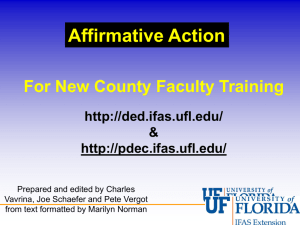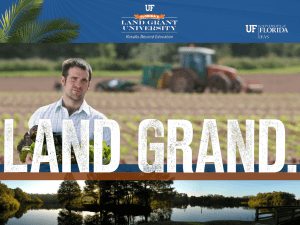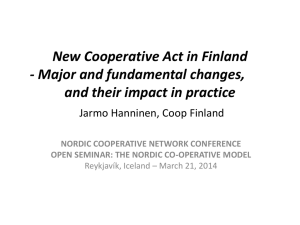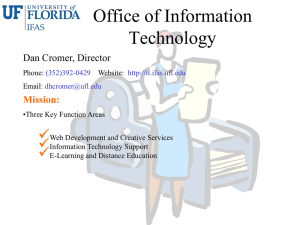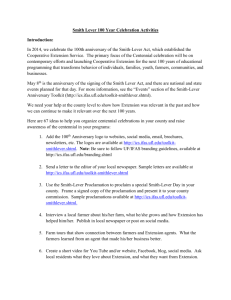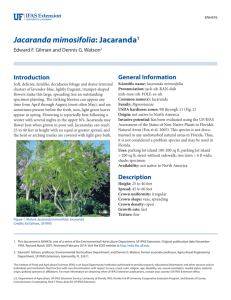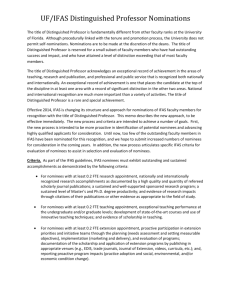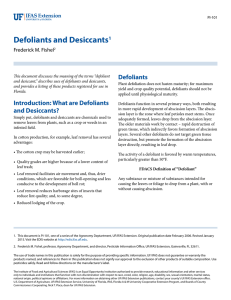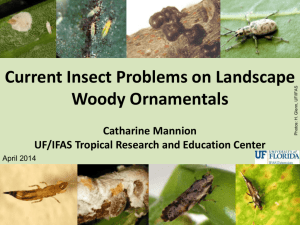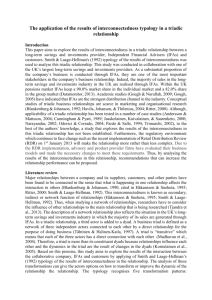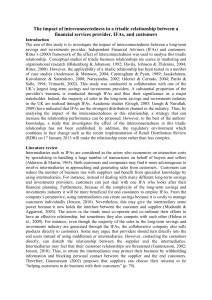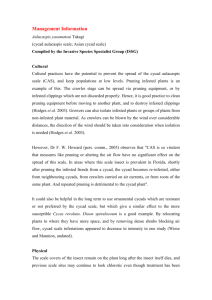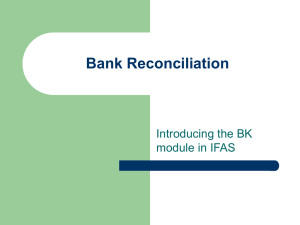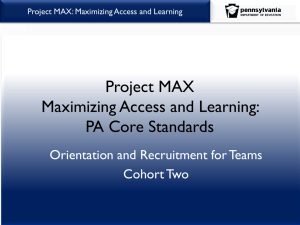North Carolina Cooperative Extension: Opportunities and
advertisement
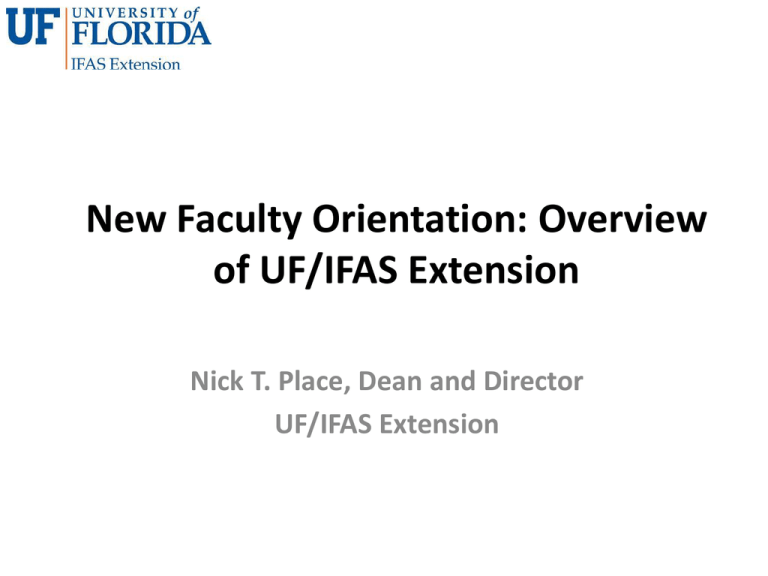
New Faculty Orientation: Overview of UF/IFAS Extension Nick T. Place, Dean and Director UF/IFAS Extension Objectives • • • • Foundational principles of Extension Challenges facing Extension Opportunities for Extension Questions and Discussion History and Background of Extension Land Grant Act (1862) First Morrill Act is passed and signed by President Abraham Lincoln, donating public lands to eligible states, the sale of which is for the "endowment, support, and maintenance of at least one college where the leading object shall be, without excluding other scientific and classical studies and including military tactics, to teach such branches of learning as are related to agriculture and the mechanic arts, in order to promote the liberal and practical education of the industrial classes in the several pursuits and professions in life." 1914 Smith-Lever Act In 1914, the Smith-Lever Act is passed, providing federal support for land-grant institutions to offer educational programs to enhance the application of useful and practical information beyond their campuses through cooperative extension efforts with states and local communities. Why was the National Cooperative Extension Created? • First Vision of Cooperative Extension’s Core Mission – The primary economic aim of simultaneously (1) producing “cheap food” for consumers and American industry; and, (2) raising farmers’ incomes through bringing science to agriculture to make it more efficient and productive. Second Vision of Cooperative Extension’s Core Mission - Building a rich, vital, democratic culture through pooling scientific knowledge with local knowledge and experience in cooperative educational work that develops the full-range of people’s individual and community capacities and well-being. Extension is: • Teaching people – In their own context – Assess their own needs and problems • Helping people – Acquire knowledge and skills – Problem-solving and decision-making • Inspiring people – Taking action The Defining Concept of Land Grants Integrated teaching, research and extension R T E Our National Extension Picture • We are in a highly pivotal time that will take a lot of perseverance along with innovative solutions for positioning Extension Systems for the future Some of the Challenges facing Cooperative Extension today (1) • Funding – Vastly different environment – Competition for funds • Ensuring recognizable impact – Value, Quality and Worth; ROI • Branding and marketing Extension • Collaborations, Linkages and Partnerships Some of the Challenges facing Cooperative Extension today (2) • Interdisciplinary research and extension – Foundational requirement today • Recruiting and retaining quality faculty & staff • Acceptance of Change – Internally and Externally Some Opportunities Facing Extension Maximizing our competitive advantages Innovation and Entrepreneurship Addressing vexing issues Technology Maximizing Our Competitive Advantages (1) • Trust and support of our users is typically high • Advancing the foundational Land Grant and Extension Missions to all people – Extension provides the opportunity to reconnect with the public • Great value of Extension as “The Front Door to the Land Grant University” – Collaborative opportunities with University Administration; other Colleges and Schools Maximizing Our Competitive Advantages (2) • Extension can no longer just operate as the holders of information – We help people utilize information for solutions that make a significant positive difference – Ultimately, solution-based programming creates strong branding and advocates • Opportunity to reach new clientele – Building a new generation of Extension advocates Innovation and Entrepreneurship • Land Grants and Extension must strive to advance Innovation and Entrepreneurship – Entrepreneurship is a state of mind – Extension must take the opportunity to instill this culture and mindset; both internally and externally • Extension must pursue innovative and creative ways of conducting educational programs • New ways to tackling problems – “One’s mind, once stretched by a new idea, never regains its original dimensions.” Oliver Wendell Holmes Addressing Vexing Issues • Extension must work on tackling highly critical issues for clientele – Food Systems; Water and Climate; Environmental Sustainability; STEM; Health and Financial Literacy; etc. • Requires interdisciplinary and collaborative efforts across all of IFAS and Extension – Goal is to bring together great educators, researchers, thinkers & doers – Philosophical and financial support are essential for advancing collaborative efforts A major vexing issue example: World food needs and a growing population…. • Food production will have to increase by 70% to feed an additional 2.3 billion people by 2050 • Will take tremendous efforts across all three mission areas; i.e. Research, Teaching and Extension Steps taken by UF/IFAS Extension • UF/IFAS Extension Roadmap (2013-2023) • Leadership Initiative Teams – – – – – – – Agriculture and Horticulture Water quality, quantity and supply Natural Resources and Environment Producing and conserving Energy Healthy lives, social and economic success Strengthening urban and rural communities (CRD) Preparing youth to be responsible citizens • Further info at PDEC: http://pdec.ifas.ufl.edu/ Maximizing Extension’s Utilization of Technology • Technology capacity of Extension users is expanding rapidly – Are we keeping up with our clientele?? • Extension must effectively utilize technology to deliver information and education • Social Media is critical for pushing out hot topics and for building advocates for Extension • Training and professional development Building a Stronger Extension “Our job is not to defend yesterday but to invent tomorrow.” Peter Drucker, Leadership and Management guru Thank you Any Questions? Nick T. Place, Dean and Director UF/IFAS Extension
